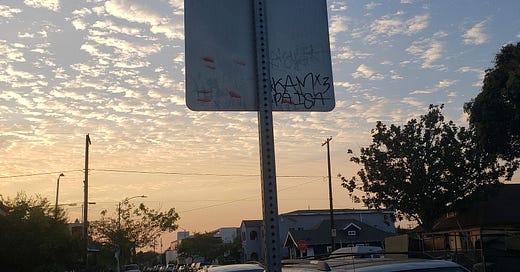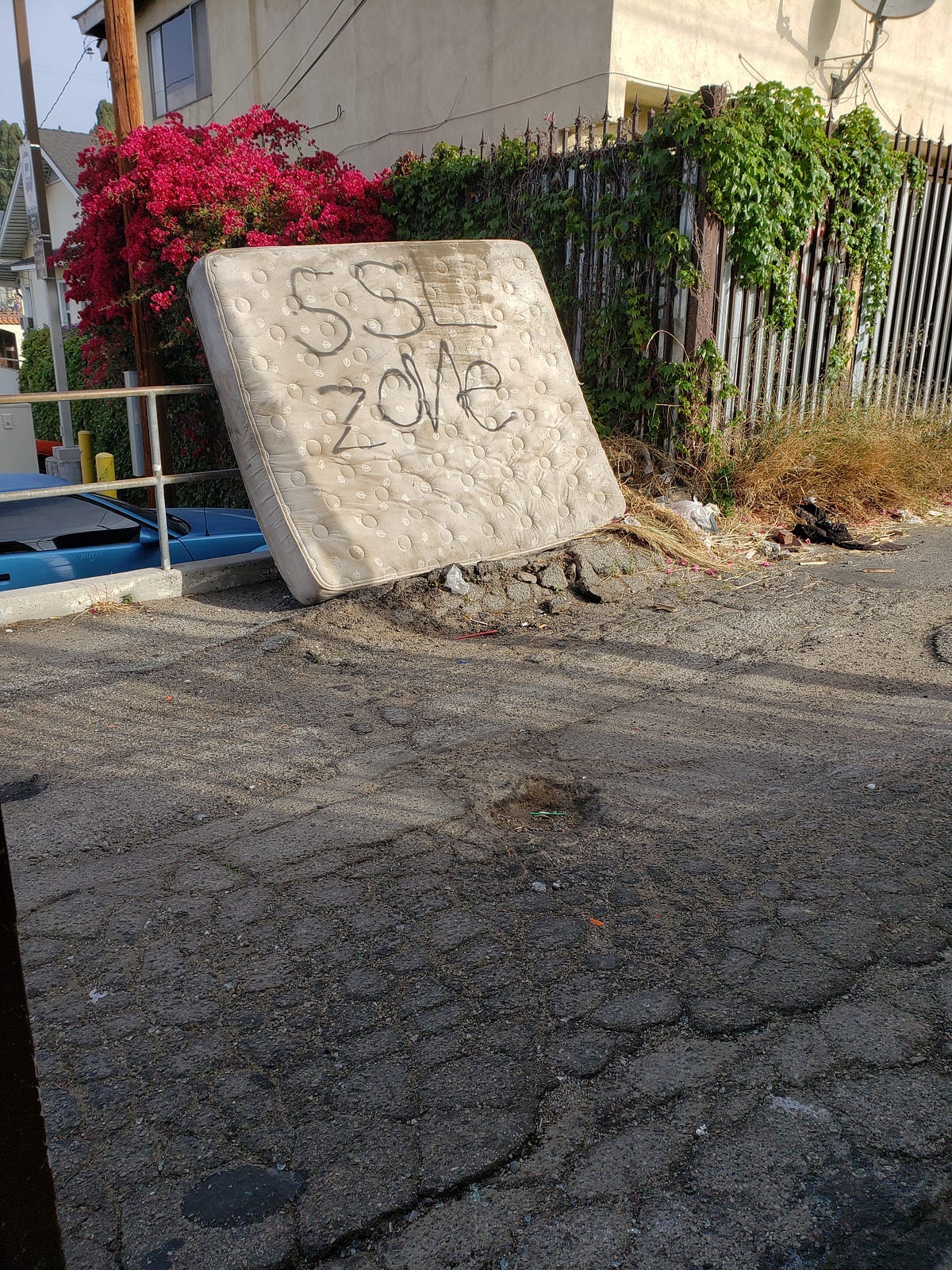The Birth, Conquest & Legacy of a Boyle Heights Tagging Crew
How a Group of Teens Took Over an LA Neighborhood
Nestled between Downtown LA and East Los Angeles, sits what is known as the Ellis Island of the West Coast.
After Boyle Heights was officially established in the 1800`s, a variety of immigrant groups began settling into this enclave, including Jewish, Japanese, Italian, Russian, and Mexican migrants.
Following America’s induction into World War 2, Japanese residents were evacuated and sent to relocation camps, while European immigrants fled to the suburbs of LA. This left a predominately Mexican American demographic to fill the void.
In the late 80`s and early 90`s, gang violence in Los Angeles was at an all time high, and the Boyle Heights area had the highest concentration of gangs.
In this era of LA gang culture, tagging crews were popping up left and right.
For those who don’t know, tagging crews or “tag bangers” as they’re often referred to, are groups of youngsters who use graffiti as a means to make their mark on the city.
These taggers roamed the landscape of this pulsing metropolis, laying down their aliases and advertising their crews on buses, billboards, buildings and any blank surface they could find.
These taggers often serve as a recruitment base for larger, established gangs within the territory they occupy.
Many tagging crews became extinct. Many were absorbed into other gangs. While some became their own neighborhoods.
It was during the late 80`s, when a crew of tag bangers calling themselves KAM aka Krazy Ass Mexicans, began to solidify their reputation in the streets of Boyle Heights.
At the time, their territory was dominated by two established gangs, Vicky’s Town and Fickett Street, both of whom pressured KAM to join their ranks.
When faced with the same situation, many other tagging crews understandably fell in line, as they were heavily outmatched.
But KAM did the unthinkable. They decided to fight back.
The Outburst
In Sir John Glubb’s famous essay; “The Fate of Empires and The Search for Survival”, he lays out the various stages that empires go through over the course of their existence.
The birth of an empire is what he calls “The Outburst” or The Age of Pioneers.
“Again and again in history we find a small nation, treated as insignificant by its contemporaries, suddenly emerging from its homeland and overrunning large areas of the world.”
Despite the fact that KAM was made up of 13–18 year olds, they began to establish themselves as a force to be reckoned with.
They violently defended their turf, eventually pushing Vicky’s Town out of the neighborhood, forcing them to relocate to San Bernardino.
Fickett Street, who were located in what is now the heart of KAM’s territory, slowly faded out and were absorbed by other gangs.
Allegedly, many of the members of these two older hoods were tecatos (heroin addicts), leaving them vulnerable to the ascent of these bold and formidable youngsters.
“Sudden outbursts are usually characterized by an extraordinary display of energy and courage. The new conquerors are normally poor, hardy, enterprising, and above all aggressive. The decaying empires which they overthrow are wealthy but defensive minded.”
The Age of Conquests
Vicky’s Town and Fickett Street were not the only legacy gangs that decided to test this emerging force.
Glubb goes on to describe the first stage of an Empire’s life, The Conquest; “A period of amazing initiative and almost incredible enterprise, courage and hardihood. These qualities, often in a very short time, produce a new and formidable nation. These early victories, however, are won chiefly by reckless bravery and daring initiative.”
Throughout the 90`s and early 2000`s, KAM began to battle with Big Hazard, Gage Maravilla, State Street Locos, Michigan Chicano Force, King Cobras and others.
State Street Locos (SSL) and KAM are longtime enemies, with the former pressuring KAM and another tagging crew known as TSS to join their gang.
State Street Locos eventually absorbed TSS, while KAM continued to fight back.
Interestingly enough, an African American member of TSS was rejected from State Street due to his ethnicity and was subsequently embraced by KAM.
This proved to be a fatal error on their part, as this new recruit allegedly killed multiple members of State Street. The African American was one of KAM’s earlier members and helped them transform into what they are today.
The Age of Commerce
If you drive through any Varrio in California, you’ll likely see the local gangs advertised on walls, usually with the x3 behind it.
X3 stands for 13. “M” being the 13th letter of the alphabet, “M” standing for La Eme aka the Mexican Mafia.
This demonstrates the group’s allegiance to La Eme and it’s status as a functioning Sureno gang.
The second stage of an empire, The Age of Commerce and Expansion, is described as consisting of “more organized, disciplined and professional campaigns. The methods employed tend to be practical and experimental, both in government and in warfare, for they are not tied by centuries of tradition, as happens in ancient empires.”
KAM further solidified themselves as an official organization upon adopting the x3.
This means they pay taxes to the Eme and will program under their organization upon entering the California prison system.
In a 2019 article written by R.W. Dellinger, he interviews a gang intervention worker named Johnny Torres, who speaks about KAM’s legendary ascent; “They started out as a simple tagging crew nobody thought anything about. The big guys didn’t anticipate they’d fight back. But that’s what they did. They were — and still are — well structured and smart.”
The Legacy of KAM 13
KAM is now one of the most hated and active gangs in Boyle Heights. They have no allies and are surrounded by enemies, who they are still at war with to this day.
Almost two decades after a corrosive cocktail of Gang enhancements, Gun enhancements, Gentrification, and RICO indictments, have swept through the Varrios of Southern California, it’s safe to say that Gang culture is not what it once was.
With hip-hop and social media playing such a huge role in the politics of LA gangbanging, along with heavy drug use, lack of leadership and a decline in values, one could argue that gang culture is in the age of decadence.
As far as where KAM is on their trajectory as an organization, is difficult to say.
What I can say is, regardless of whether they are here for ten years or fifty, the story of KAM is the story of an empire — the birth of a nation on a miniature scale.
To this day, Boyle Heights still has an old-school atmosphere, with its classic architecture, street level commerce and sense of neighborhood kinship.
And if one were to find themselves strolling near Malabar & Fickett, not only would you see visible signs that you are in KAM’s territory, you would see they never lost their flair for writing on walls.
Similar to how the Arabs burst out of their desert peninsula in 633 A.D, KAM conquered territory and established a reputation, one which was ruthless, strategic, daring, and capable.
To quote Johnny Torres, the gang intervention worker; “It’s amazing to imagine the minds of these young KAM people. Imagine what it would have been like if they had put their efforts toward something positive. I mean, to orchestrate what they did, they had to have the strategy of a four star general.”







